It was said to me that to know modern Israel one would have to spend time on a military base and on a kibbutz.
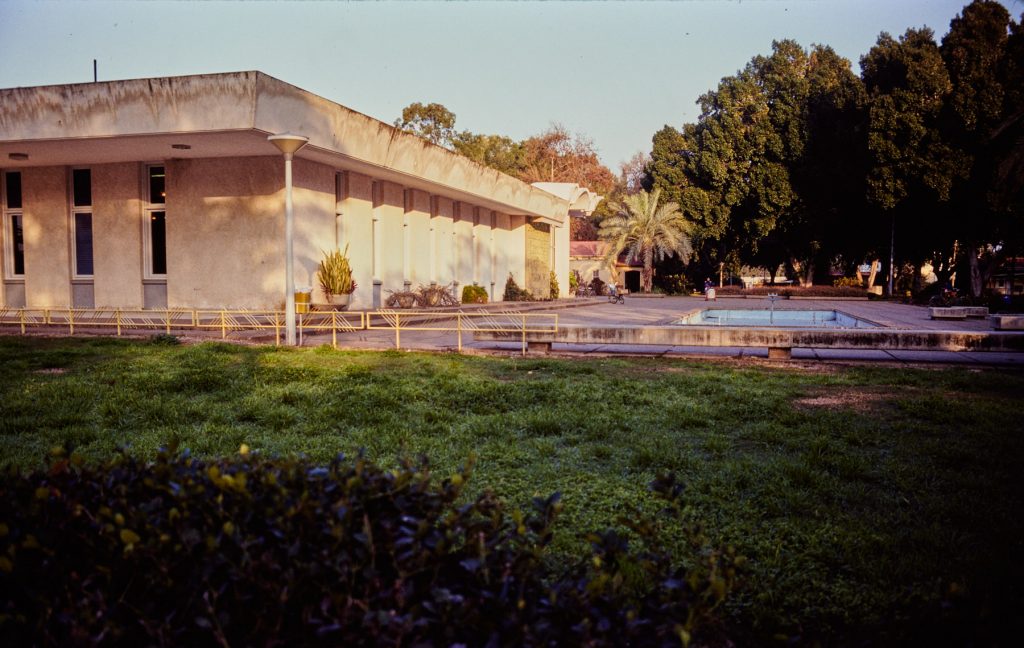
I had time between the end of the university semester and the start of courses at St. George’s. For many at the time who travelled rough around Europe, the kibbutz was a place to winter providing shelter and food in exchange for work. It suited me as well. I was able to apply for a kibbutz stay before I left Canada and I picked one that had horses. It was by its name, the gate of the Golan. In fact I would stand at the back fence of the kibbutz at a post to which three fences attached. The post was the very meeting point for the borders of three countries -Israel, Syria and Jordan. It is also the location of one of the most important early sites of habitation going back 8000 years. It is the earliest known human habitation, the first established habitation for the nomadic Yarmukians, a neolithic people. There’s a lovely museum as well of discovered artifacts. I was reading James Michener’s The Source a book in part written about the very place I was living, the very place 8,000 years ago, an ancestral people settled down to farm. My turn. The earth beneath my feet.
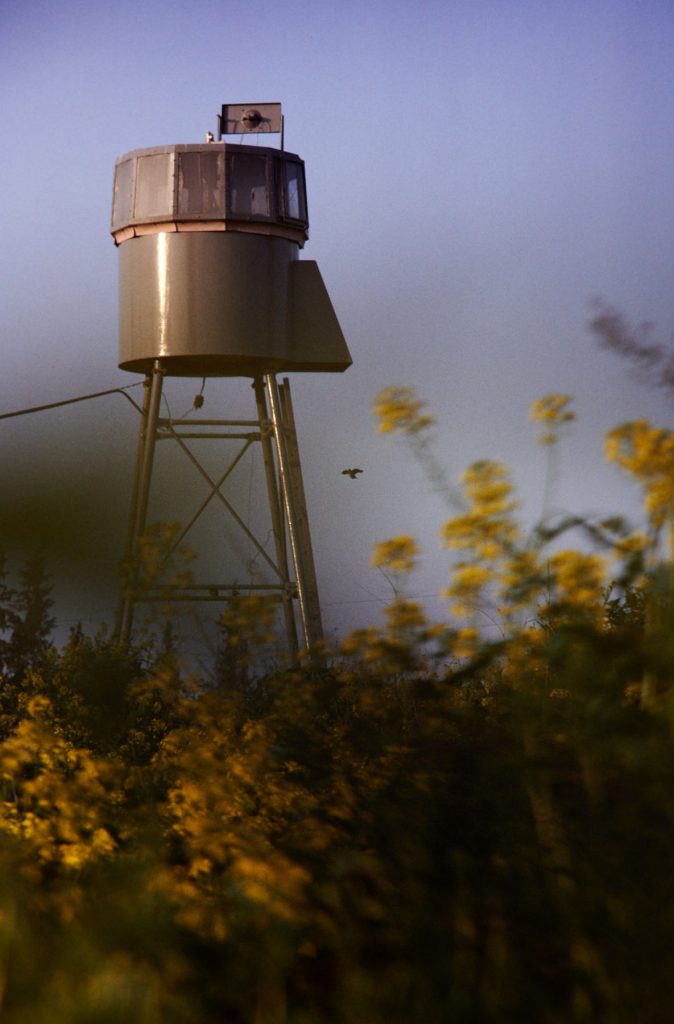
Kibbutzim were the front line of the new state of Israel securing the perimeter, often in the beginning under steady rocket fire. The kibbutz movement is a collective-based social order informed by on socialism and Zionism, most being secular and some religious. They were a utopian society clearing land and draining swamps for the new nation. Some of Israel’s greatest leaders came from the Kibbutz movement.
Life on a kibbutz was hard work. The women worked alongside the men. The children lived separately. Many of the parents coming from the European Shtels didn’t feel competent to raise the children and wanted professionals to take care of the children’s needs. At 4 PM everyday, the children would visit their parents, the idea being the family time would be a joyful time free of parents having to be their children’s disciplinarians.
Kibbutz Sha’ar Golan was well-established and wealthy. The members had just voted on acquiring a new product. Everyone shared equally, so if they bought something, everyone would get it. The Kibbutz members voted between having no holiday and buying colour TVs or having a reduced holiday and B&W TV. They went with the latter. But it had immediate consequence on the social life. The families no longer ate dinner together in the dining hall. They came over at 5PM with their food containers and took their meals back to the living units. And watched TV. Sadly.
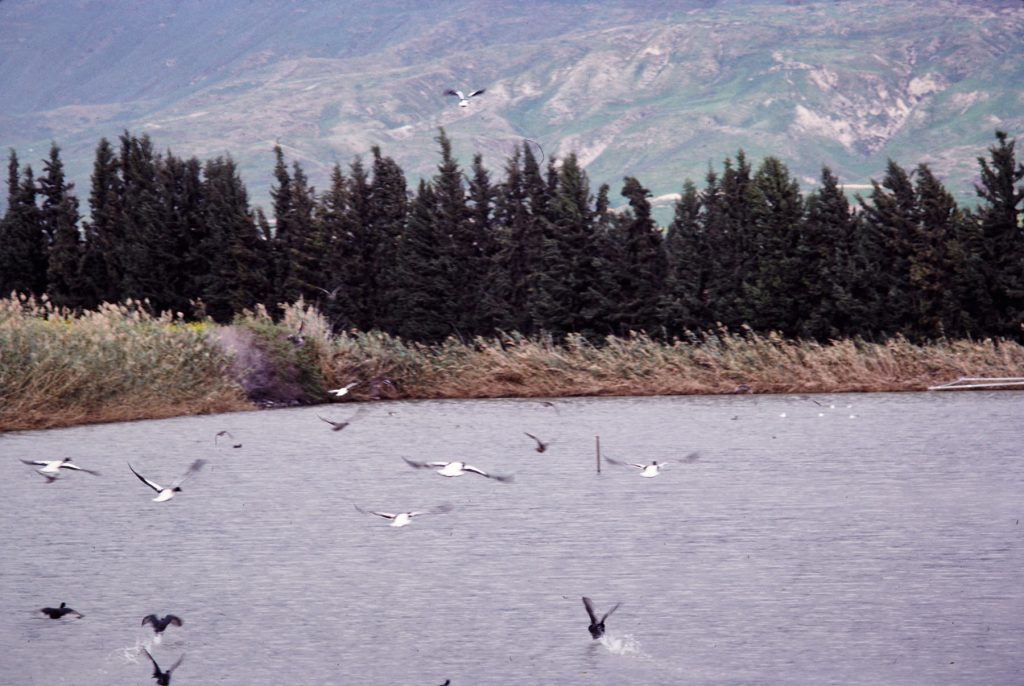
Kibbutz Sha’ar Ha Golan was an established, wealthy kibbutz with the plastics engineering and manufacturing, trout ponds seen here, agricultural produce including bananas and watermelon. It was major milk producer and had just started on a plan to breed horses. The local Bedouin though didn’t think much of their horse sense spending $1 million USD for two mares and a stallion, showy Arabian horses. A bit of irony in the breed name.
Volunteers start out at Kibbutz Sha’ar Ha Golan working in the plastics factory. I stood by a machine and watched it slowly make the plastic blinds the factory was famous for, and then I’d lift the bundle off the belt and place on a cart. Every volunteer also had to spend one week on kitchen duty washing all the pots and pans from the collective breakfast and lunch. I offered to stay for two weeks. I was able to work at my own speed, and working fast I could even finish early.
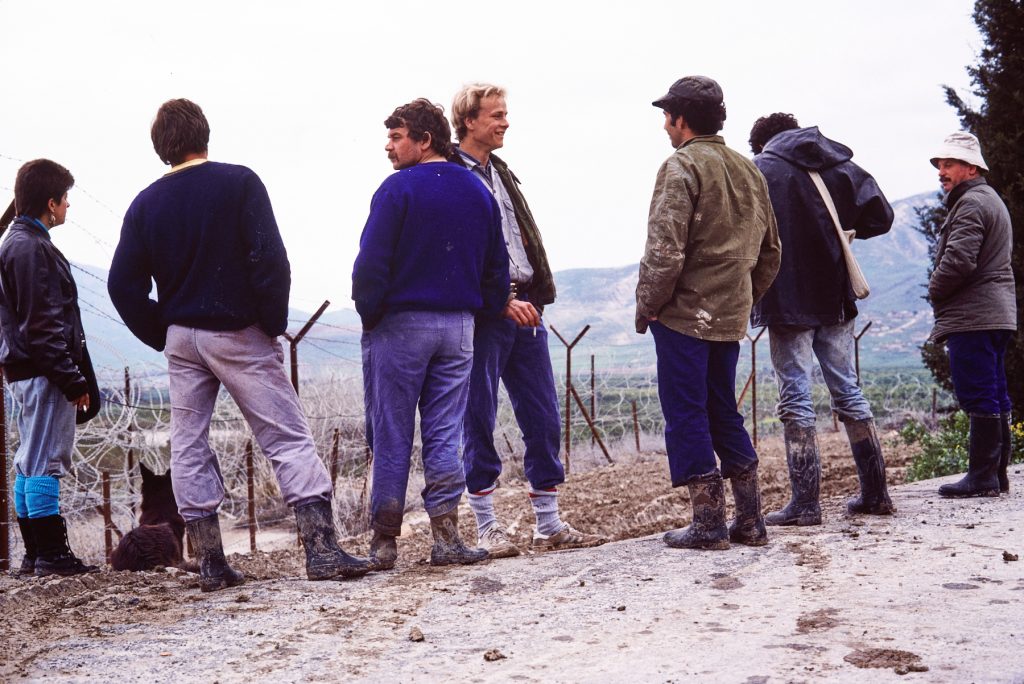
I was soon moved to bananas, which was desirable. In fact on my first day, it rained. Because we couldn’t harvest bananas in the rain, the kibbutz decided it was a perfect time to take the banana volunteers to the local Roman baths. I was told the best time to be in the outdoor bath was when it was raining. For the work in bananas which I started the next day, I’d tag after two Kibbutzniks into the banana grove. One would decide which bunch was ready to harvest; the other would cut the stem while I held the 60 pound load of bananas. I then carried the stem of bananas and hooked it into a wheeled frame, part of a shipping system designed by Kibbutzniks. The next person to touch the bananas after me was the shopkeeper in Europe.
I went very soon from bananas to the Refet, three of us working one of three 8 hour shifts milking 800 head of cattle. Hardly anyone volunteer got to work there, but it so happened the Kibbutznik looking after the Kibbutz horses, Arabians, two mares and a stallion purchased in the U.S. for $1 million, had to go for his yearly military duty. As I had experience with the horses and would visit them everyday anyway, they chose to have me close to the barn in case something happened. Better than plastic.
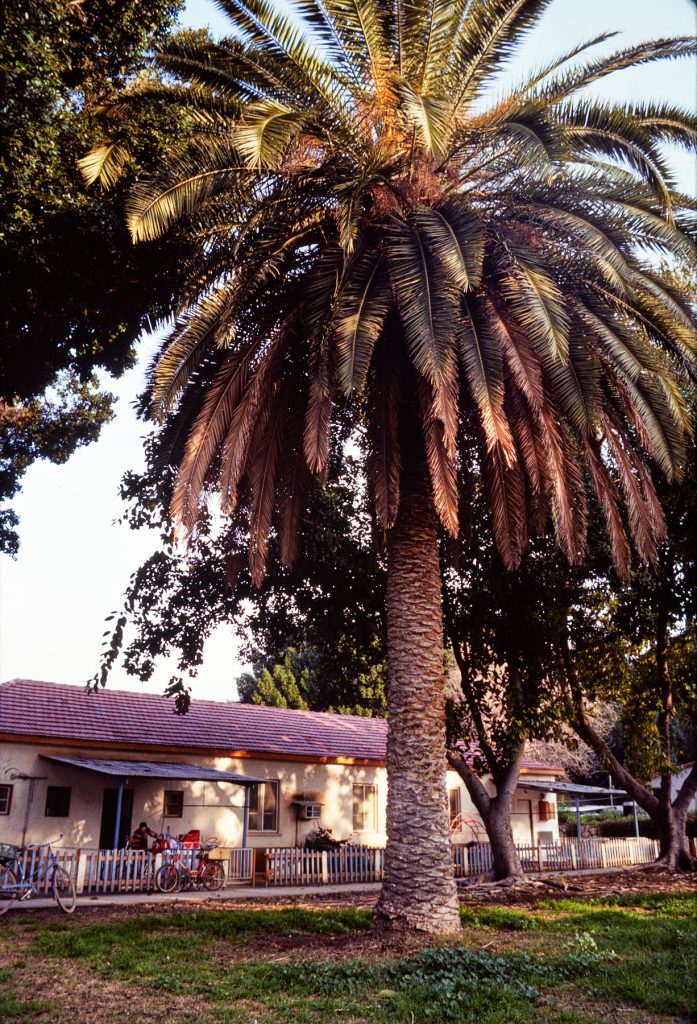
I regularly visited one of the kibbutz families. I had made a request for such adn they were happy to do it. Typically volunteers hung out with each other. I wanted to get to know Kibbutznik life better. I met my hosts in their home (pictured here) each day at 4PM when their children joined them for the daily visit. After an hour, I went over to the dining hall to eat. The parents picked up food at the hall and took it back to their home and ate with the children. At 8:00 PM, the children went back to their own accommodation, the Children’s House.
I also was able to visit the children’s house and speak to their metapelets (part educator, part nurse, part nanny). In fact, they gave me permission to write a sociology paper based on interviews with the children. If nothing else, the kibbutz system has been studied endlessly. One interesting study found much stronger emotional ties between the children and their metapelets. The original intent was for the parents to have a strong positive relationship with the children because they only spent what we might call now quality time together for 4 hours a day and the professionals managed the care of the children. The study found that the activity of disciplining and rating the children done by the metapelet bonded them much closer together than did the fun time bond children with parents.
I was doing a paper for U of Haifa because the main university faculty had been on strike for much of the semester. I had to make up the time after my semester ended because I required the course for my next adventure at graduate school. I recall one story from my interviews that moved me. A young boy had an uncle in America who sent him a pair of rainbow-coloured suspenders and white shorts. Compared to the clothes the children wore, the pants and suspenders were radiant. As a collective, the children didn’t own their own clothes; each day they’d go to a common box and find clothing to wear. In this case the sparkling white shorts and colourful suspenders were a gift and the boy could have strutted about in them showing off to his housemates. He didn’t. He only wore them after all the other boys had worn them first. He didn’t understand about being admired and feeling superior to others. He understood that anything he had that was good, he shared. And for that he was happy. And he was 10 years old. Taught me a lot, I have to say.
Another bit of research which I had in the back of my mind was that Kibbutznik children had a hard time falling in love and choosing a life-partner. Living all their lives in the children’s house, everyone of their age group seemed more like brothers and sisters to them, not someone to marry and have children with.
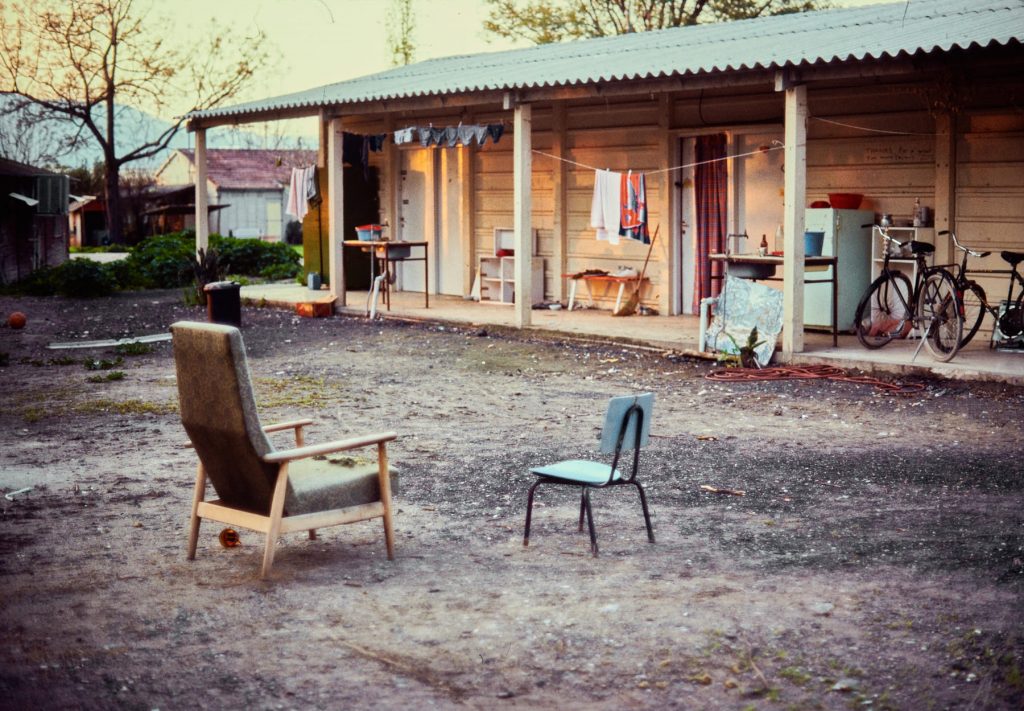
On my weekly day off, I’d ride a kibbutz bike along the east side of the Kinneret up to the north end of the lake and the traditional site of the Mount of Beatitudes where on a slope Jesus was to have talked to the masses and given them the Beatitudes. Blessed are the… for they shall…..I’d watch the tour busses come up the hill, enter the beautiful chapel, twenty minutes later to leave. When they left, the songs of the birds returned as I lay there on the slope in the long grass, Lake Kinneret gleaming below me.
Though a secular kibbutz, the kibbutz celebrated Purim. I helped make the faces, the pink one I think. Our volunteer supervisor came by the volunteer meeting room and read us the story of Purim but stopped before the actual end of the story, thankfully.
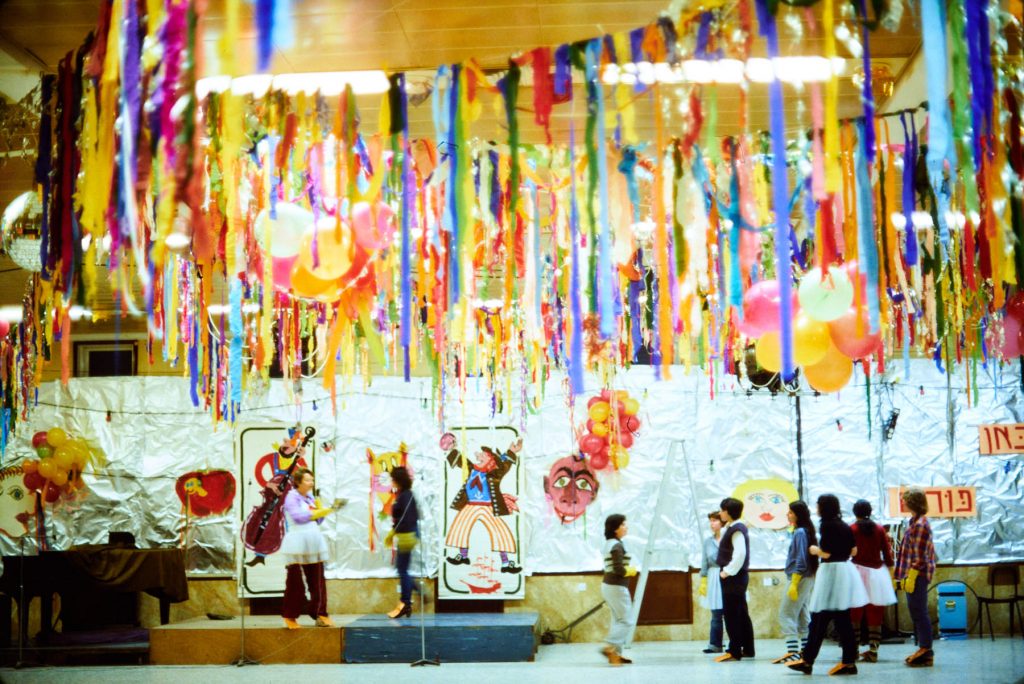
The experience on the kibbutz was a wonderful time for me. I could nearly imagine living there among the treed pathways, living an idyllic life, with warm shelter and abundant meals prepared for me each day. Ok. They had a few hundred opinions about everything, and nothing happened until they all agreed! Truly, it was beautiful to be there among them; I learned so much about community, sharing.
